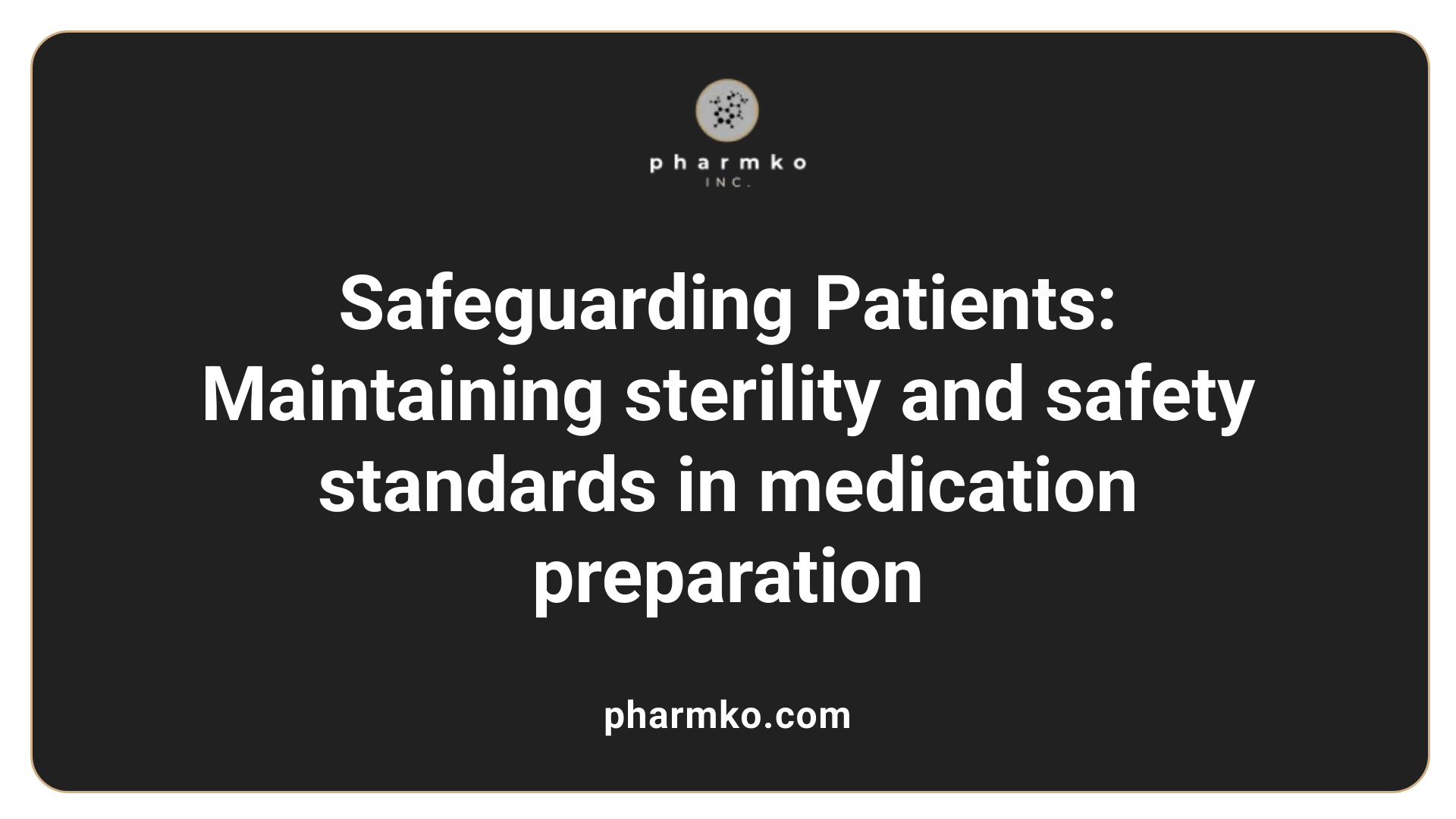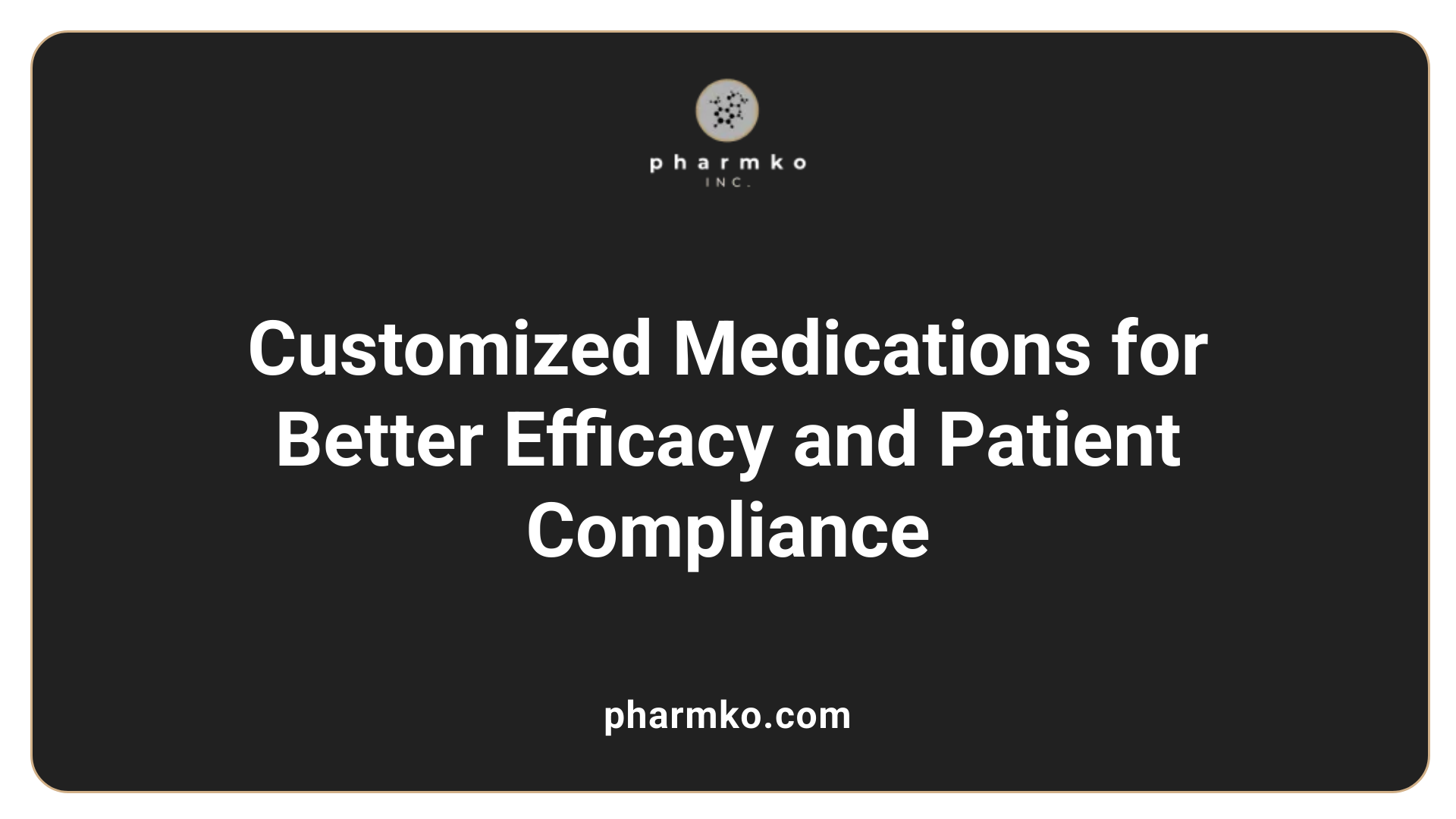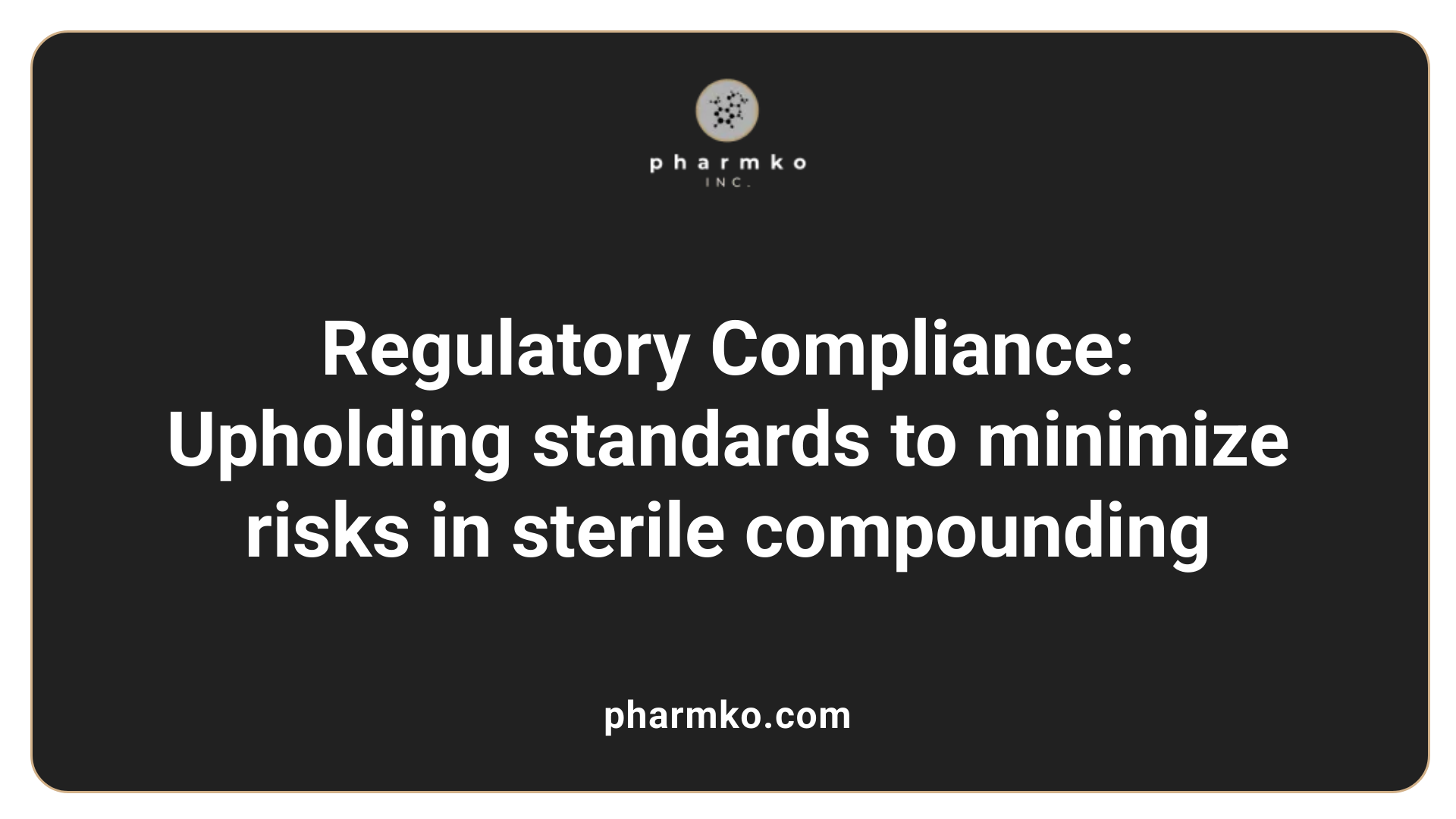What are the benefits of sterile compounding?
Understanding the Power of Sterile Compounding
Sterile compounding is a critical facet of modern pharmacy practice, enabling the preparation of customized medications within a highly controlled, germ-free environment. This process ensures that patients receive safe, effective, and tailored therapies, addressing the unique and complex needs of diverse patient populations. As healthcare continues to evolve, the role of sterile compounding expands, offering new ways to improve treatment outcomes, enhance safety protocols, and meet regulatory standards. This article explores the manifold benefits of sterile compounding, emphasizing its importance in safeguarding patient health, supporting pharmacy services, and integrating advanced technology.
The Role of Sterile Compounding in Ensuring Patient Safety and Enhancing Care

How does sterile compounding improve patient care and address clinical needs?
Sterile compounding plays a vital role in modern healthcare by delivering customized medications tailored to individual patient requirements. Unlike standard drugs, compounded medications can be adjusted for specific dosages, forms, or ingredient exclusions necessary for certain patients. This flexibility is essential for populations such as pediatric, geriatric, or allergy-sensitive individuals who might not be adequately served by commercially available products.
One of the significant advantages of sterile compounding is its capacity to address drug shortages. When specific medications are unavailable or have been discontinued, compounded drugs allow continued treatment, ensuring patients do not experience gaps in their therapies.
Safety is a central pillar of sterile compounding. Medications are prepared in controlled, germ-free environments that meet strict standards, including ISO Class 5 air quality, and employ rigorous aseptic techniques. This meticulous process minimizes the risk of contamination, infection, or adverse reactions, providing an extra layer of safety for vulnerable patients.
Moreover, sterile compounding enhances treatment adherence and efficacy by creating aid-friendly formulations. For example, medications can be flavored or transformed into liquids for easier consumption, especially for children or those with swallowing difficulties.
In addition to safety and personalization, compounded medications expand treatment options for complex or rare conditions. They can be tailored to omit allergens like gluten or dyes and packed into various forms such as gels, creams, or implants, which are otherwise unavailable.
Overall, sterile compounding bridges critical gaps in healthcare by enabling personalized treatment, maintaining safety protocols, and ensuring access to vital therapies, all while emphasizing the importance of proper regulation, staff training, and quality assurance for optimal patient outcomes.
How Sterile Compounding Safeguards Medication Safety and Quality

What are the benefits of sterile compounding in medication safety and quality control?
Sterile compounding is essential for ensuring the safety and high quality of certain medications. It involves preparing drugs in a meticulously controlled, germ-free environment, which significantly reduces the risk of contamination. This process is vital for medications administered via injection, infusion, or eye applications, where sterility is crucial to patient safety.
One of the primary advantages is the ability to customize medication formulations according to individual patient needs. This includes adjusting doses, omitting allergens, or creating specific drug forms like liquids, gels, or suppositories. Such customization can improve treatment effectiveness and patient compliance.
Furthermore, sterile compounding adheres to strict standards, such as USP <797> and current Good Manufacturing Practices (CGMP), ensuring that all preparations meet rigorous safety and quality criteria. Regular environmental monitoring, proper gowning, and sterilization procedures further support this high standard.
The environment used in sterile compounding—such as ISO Class 5 clean rooms equipped with HEPA filters—provides a particle-free space that prevents microbial contamination. This controlled setting, combined with thorough staff training and validated procedures, offers an effective barrier against infection risks.
In cases where commercial drugs are unavailable due to shortages or discontinuation, sterile compounding fills critical therapeutic gaps. It allows pharmacists to re-create medications, such as discontinued formulations or those requiring specific dosing, thus ensuring continuity of care.
Overall, sterile compounding plays a significant role in public health by producing safe, effective, and tailored medications. By combining technological controls, adherence to standards, and professional expertise, it maintains the integrity of compounded medicines and reduces the likelihood of errors or adverse effects.
Enhancing Pharmacy Services and Safety Protocols

How does sterile compounding enhance pharmacy services and safety in healthcare settings?
Sterile compounding elevates pharmacy services by allowing the creation of personalized, sterile medications tailored to specific patient needs. This is particularly crucial when commercially available drugs are unsuitable, unavailable, or require dose adjustments. By preparing medications such as injectables, ophthalmic solutions, or implants in a controlled, germ-free environment, pharmacists can ensure the highest safety standards.
A cornerstone of this process involves strict environmental and personnel controls. Facilities utilize advanced technology, including cleanrooms that meet ISO Class 7 or better air quality standards, HEPA filters, and unidirectional airflow to minimize microbial presence. Proper gowning, hand hygiene, and aseptic techniques—following guidelines like USP <797>—are mandatory. These measures prevent contamination during vital steps like compounding, which could otherwise introduce bacteria or fungi into sterile preparations.
The impact of regulations such as USP 797 is profound. They define the design and maintenance of clean environments, staff training, environmental monitoring, and documentation practices. Regular testing, certification, and adherence to protocols ensure ongoing compliance. Automation tools, including barcode verification and record-keeping, further reduce human error, improving accuracy and accountability.
By combining meticulous environmental controls, staff training, and strict adherence to safety standards, sterile compounding minimizes risks such as infections and medication errors. This comprehensive approach not only protects patients but also boosts confidence in pharmacy services, facilitating safer, more effective healthcare delivery. Overall, integrating these safety protocols ensures that compounded medications uphold the highest quality and safety standards, significantly benefiting patient outcomes.
Regulatory Standards: The Backbone of Safe Compounding
Why is compliance with standards and regulations important in sterile pharmaceutical preparation?
Compliance with standards and regulations in sterile pharmaceutical preparation is essential for ensuring the safety, quality, and effectiveness of compounded medications. It helps protect patients from risks such as contamination, infection, and incorrect dosing.
Guidelines like USP <797>, FDA regulations, and state-specific rules provide clear frameworks for maintaining a controlled environment. These standards specify requirements for facilities, environmental conditions, staff training, and documentation to uphold safety and sterility.
Environmental monitoring is a critical part of this process. Regular testing of air quality, surfaces, and personnel practices ensures that the sterile environment remains uncontaminated. Proper staff training and ongoing competency assessments are also vital to maintain aseptic techniques and prevent errors.
When facilities strictly follow these regulations, there is a significant reduction in microbial and particulate contamination risks. Consistent documentation and validation procedures enable early detection of deviations, allowing corrective actions before any patient harm occurs.
Moreover, adherence to regulations enhances professional credibility and legal compliance. It facilitates regulatory approval, qualifying the facility to provide compounded sterile medications safely. In the end, rigorous compliance directly contributes to patient safety by maintaining a high standard of cleanliness and process control in sterile compounding environments.
The Significance of Certification and Technology in Sterile Compounding
What is the significance of sterile compounding certification for pharmacy professionals?
Sterile compounding certification is vital for pharmacy professionals because it confirms their competence in preparing medications in a sterile, contaminant-free environment. Achieving certification demonstrates their mastery of stringent techniques and standards outlined by regulatory bodies such as USP <797> and <795>. This specialized training is crucial when compounding complex medications like chemotherapy agents or ophthalmic solutions, where sterility and precision directly impact patient safety.
Certification not only boosts professional credibility but also opens doors to better career opportunities and higher wages. It encourages ongoing professional development, keeps practitioners updated on best practices, and enhances confidence in their ability to deliver safe, effective medications. Furthermore, certified personnel help pharmacies uphold safety standards, reduce errors, and stay compliant with industry regulations, ultimately protecting patients, staff, and the environment. In essence, obtaining sterile compounding certification reflects a dedicated commitment to excellence within pharmacy practice.
How does automation and technology improve sterile compounding processes and safety?
Advancements in automation and technology have transformed sterile compounding, making it safer and more reliable. Automated systems such as barcode verification, gravimetric analysis, and workflow management tools help ensure accurate medication preparation and strong documentation trails. These innovations support adherence to strict regulatory standards while reducing manual errors.
Equipment like robotic compounding arms, Closed System Transfer Devices, and restricted access barrier systems minimize contamination risks by controlling the environment and limiting human contact with sterile drugs. Real-time monitoring systems, including artificial intelligence (AI), can identify errors during preparation, optimize workflows, and facilitate immediate corrective actions.
Overall, technology not only reduces the chance of mistakes but also standardizes processes, ensuring consistent quality in sterile preparations. These advancements provide a safer environment for both patients and healthcare providers, improving trust and outcomes in pharmacy services.
Bringing It All Together
Sterile compounding stands at the forefront of personalized medicine, safety, and quality assurance in modern healthcare. By adhering to stringent standards and leveraging technological advancements, pharmacy professionals can produce medications that are both safe and tailored to patient needs. Certification and ongoing training ensure workforce competence, while controlled environments and regulatory compliance minimize risks. Together, these elements forge a pathway toward more effective, safer, and innovative pharmacy services, ultimately benefiting patients and healthcare providers alike.
References
- What is Sterile Compounding?
- An Overview of Compounding - The Clinical Utility of ... - NCBI
- The Benefits of On-Site Sterile Compounding in a USP Clean Room
- Sterile Compounding vs Non-Sterile Compounding FAQ | Fort Myers ...
- Sterile Compounding - CompleteRx
- Pros and Cons of Pharmacy Compounding - U.S. Pharmacist
- Benefits Of Sterile Compounding Certification
- Compounding and the FDA: Questions and Answers
- Three key reasons to automate sterile compounding | Wolters Kluwer













